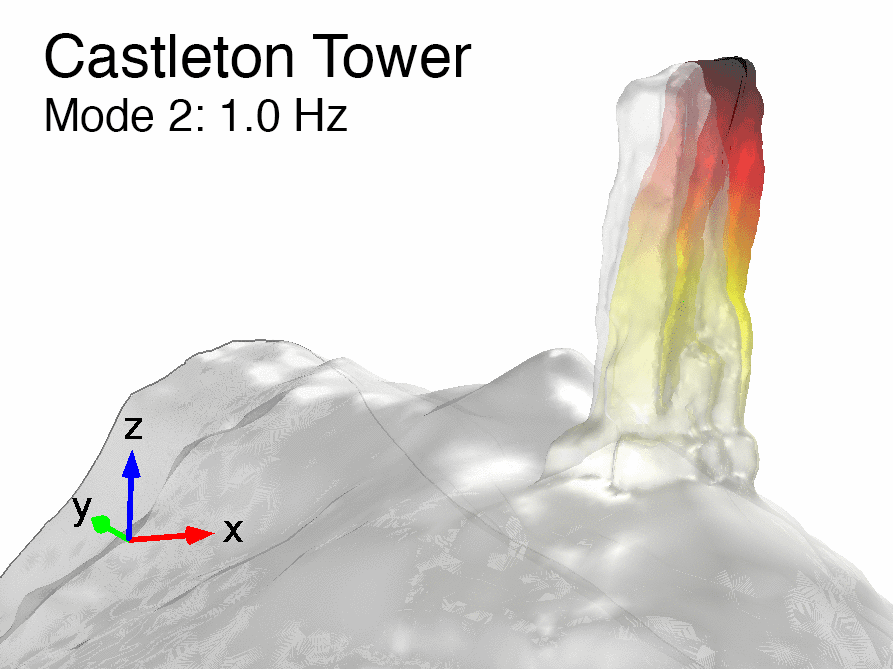

Castle Rock is a 400-foot (120 m) Wingate Sandstone tower standing on a 1,000 foot Moenkopi-Chinle cone above the northeastern border of Castle Valley, Utah. The Tower is world-renowned as a subject for photography and for its classic rock climbing routes, the most famous of which is the Kor-Ingalls Route featured in Fifty Classic Climbs of North America. Castle Rock can be accessed by a trail that begins south of the tower at a primitive camp ground. Castleton Tower sits at the southern terminus of a ridge made mostly of red sand, gravel, scatter boulders, and few short cliff lines. Read more ...

Utah's red rock metronome: Seismic readings reveal Castleton Tower's unseen vibrations PhysOrg - August 26, 2019
A Utah rock formation called Castleton Tower gently vibrates, at about the same rate that your heart beats, keeping time and watch over the sandstone desert. Swaying like a skyscraper, the red rock tower taps into the deep vibrations in the earth - wind, waves and far-off earthquakes.
Castleton Tower is a spire of Wingate Sandstone nearly 400 feet (120 m) tall that stands over Utah's Castle Valley. First climbed in 1961, Castleton Tower became a widely renowned classic destination after appearing as one of two Utah climbs in the 1979 book "Fifty Classic Climbs of North America." It's one of the largest freestanding rock towers.
"Most people are in awe of its static stability, in its dramatic freestanding nature perched at the end of a ridge overlooking Castle Valley," says geologist Jeff Moore, who led the study. "It has a kind of stoic power in its appearance."
Moore and his colleagues study the vibrations of rock structures, including arches and bridges, to understand what natural forces act on these structures. They also measure the rocks' resonance, or the way the structures amplify the energy that passes through them. Sources of this energy can be as local as wind gusts or traffic on a nearby road or as distant as far-off earthquakes and even ocean waves. Because nothing is truly static, there is always energy propagating throughout the earth, which serves as a constant vibration source for the rock.
Moore, Finnegan and graduate student Paul Geimer have been developing and refining their methods of measuring rock structures as they've surveyed arches, bridges and hoodoos, which are small spire-like formations - towers on a smaller scale. They use seismometers to measure even the slightest movement in three dimensions. For some of their measurements, they've sped up the low-frequency seismic data into audible sound - allowing you to listen to the voice of a rock.